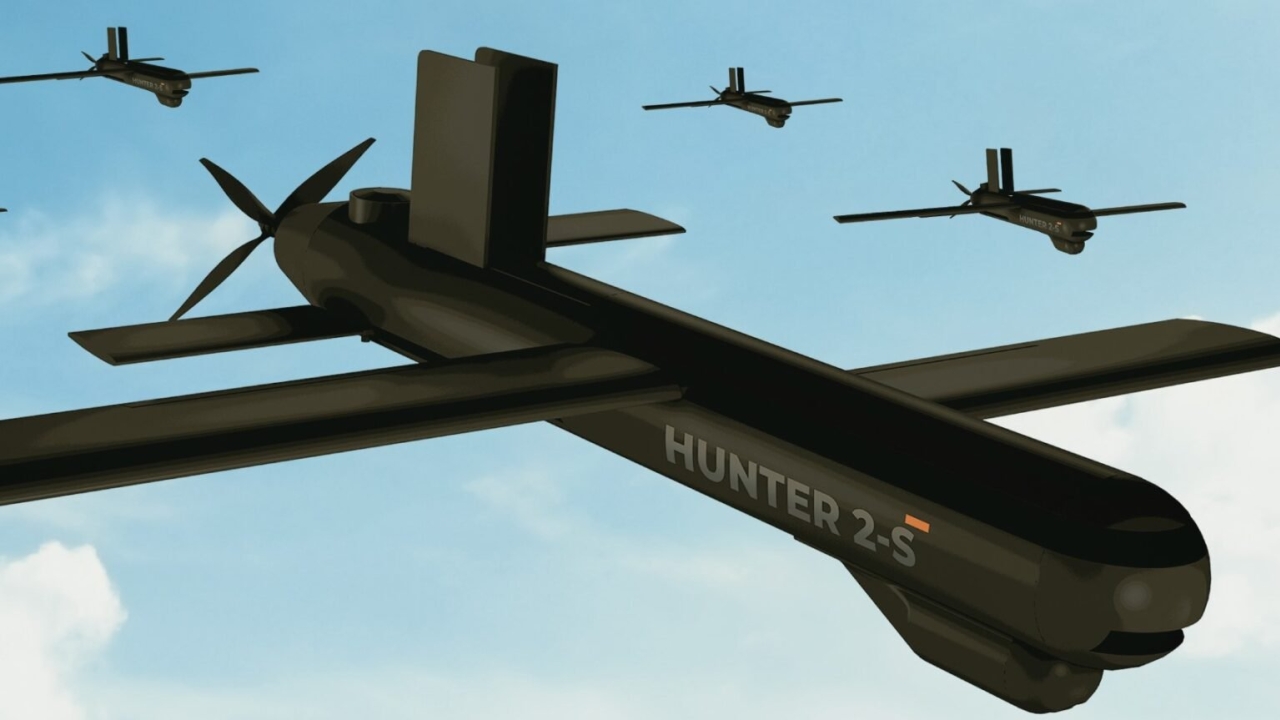UAE’s drones gives it the Edge
Mohammed Bin Zayed Al Nahyan, president of the United Arab Emirates (UAE), created Edge in 2019. Now a defence mammoth with 6,000 employees and more than 25 subsidiaries, in 2020 Edge became the 22nd biggest arms seller with US$4.75bn in sales.

The Hunter 2-S is a tube-launched swarming drone. PICTURE: Edge
One of its subsidiaries is Adasi (Abu Dhabi Autonomous Systems Investments), which designs, manufactures, and maintains next-generation unmanned systems for air, land and sea, that are capable of performing in a diverse range of demanding environments.
With the United States reluctance to supply the UAE with advanced armed unmanned aerial systems, such as the General Atomics’ MQ-9A Reaper, Adasi is producing a range of indigenous UAVs for the Emirates’ armed forces and for potential exports.
These include the Air Truck, a powerful logistics UAV with a 500kg payload capacity that can operate via a pre-programmed mission or live operator, making it ideal for higher-risk or more dangerous missions. Suitable for military, and civilian deployment, cargo can be transported via a custom-designed air box that ensures rapid cargo loading and unloading.
The Garmoosha is a VTOL UAV designed to carry payloads of approximately 120kg with an endurance of eight hours and 150km (81nm) range. Designed for surveillance capabilities, it is powered by a low-consumption fuel engine.
The QX-4 is a VTOL mini-UAV for advanced intelligence, surveillance and reconnaissance (ISR) missions, featuring an extended endurance of up to 13 hours. With advanced autopilot and communication systems, the QX-4 can carry payloads of up to seven kilogrammes, is easily transportable by a light vehicle and delivers a stand-off range of 150km (81nm).
Another addition to the QX range, the QX6-50 is developed for logistics purposes for military and civilian applications. Capable of carrying a 50kg payload for up to 200km (108nm), the rotary-wing UAV can operate autonomously and is highly modular with other QX variants for ease of maintenance.
Adasi has also designed and marketed a series of loitering munitions with the manufacturer Halcon, including the QX-1, which provides military forces with an effective small-footprint tool to make discreet, targeted attacks with accuracy and effectiveness. Easy to carry, this kamikaze system features multiple fuse options to meet any mission requirement. The quad-rotor kamikaze VTOL mini-drone provides operators with an onboard video feed, fast-flight attack speed, a range of 10km (5.4nm) and a 500-gramme payload.
The Shadow 25 is a fixed-wing smart loitering munitions system that provides defence forces with a jet-powered, rapid-strike kamikaze munition capable of delivering a precision strike against fixed targets. Featuring advanced guidance capabilities and onboard video navigation, the system has a cruising speed of 400 km/hr (216 kts), creating new opportunities to swiftly neutralise stationary enemy targets with a powerful 25kg payload up to a range of 295km (159nm) away.
The advanced Shadow 50-P provides defence forces with a powerful, long-endurance, loitering munition that delivers precision strike capabilities against fixed targets. Its advanced guidance capabilities and onboard video navigation, enables the rapid delivery of large payloads.
In February, 2023 Adasi announced that it has signed a US$362 million contract to supply an undisclosed number of Shadow 25 and Shadow 50 UAVs to the UAE Armed Forces.
Other systems in production include the Hunter soldier portable (SP) UAV, the tube-launched Hunter 2-S swarming UAV system equipped with advanced AI-technology, which has been also supplied to the UAE Armed Forces, and the Reach-S armed UAS which is undergoing flight trails.
A mockup of the Adasi Jeniah low-observable unmanned combat air vehicle (UCAV) was displayed at IDEX 2023 in Abu Dhabi. The Jeniah is 10.5-metres long and is fitted with trapezoidal wings with a 6.5-metre span and a V-shaped tail-plane. Maximum take-off mass is stated to be in excess of 4,000kg, carrying a weapons payload of 480kg. All of its weapon load is designed to be carried within the weapons bay, to ensure maximum stealthiness. Propulsion is provided by an unspecified jet engine, which will ensure a maximum speed in excess of 1,000 km/h (540 kts), and a cruising speed of Mach 0.8.
Although there is no confirmation of when the Jeniah will be built and flight tested, it is an indication of Edge’s ambition to become a global leader in advanced autonomous systems.
Stay up to date
Subscribe to the free Times Aerospace newsletter and receive the latest content every week. We'll never share your email address.


